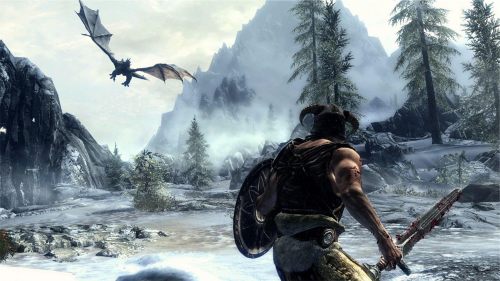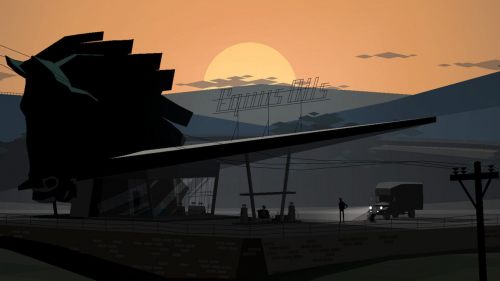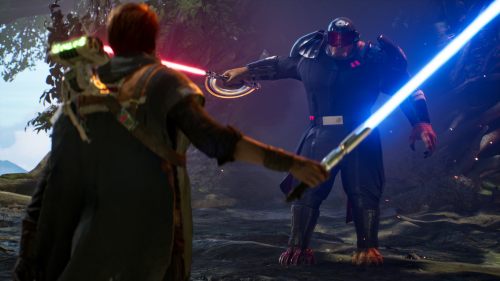MAFIA III Game Review: Racism And Revenge In The Summer Of ‘68
As far back as they could remember, video games always wanted to be gangster movies. Nothing screams “cool” like movie mobsters, so it’s no surprise that an industry obsessed with being cool would make such efforts to imitate them. Some games have been based directly on gangster movies, in the case of The Godfather and Scarface: The World Is Yours. Grand Theft Auto has always been a riff on the criminal version of the American Dream. And then there’s the Mafia series.
After two games revolving around the Italian mob, Mafia III stakes out new territory. The Mafia is still in there, but our protagonist isn’t among them. It’s 1968, and Lincoln Clay is a black Vietnam vet recently returned to New Orleans stand-in New Bordeaux. Betrayed by mob boss Sal Marcone, he sets about getting his revenge - and the best revenge, apparently, is taking over the whole goddamn city by any means necessary.
Rather than taking after gangster films, Mafia III’s cinematic language of choice is the documentary. The nonlinear story frequently cuts away to talking heads and archive footage to fill in background and build Lincoln’s legend. It’s a clever way of delivering exposition (and of concealing loading screens), and gives the in-game events a sense of weight. We don’t see narrative devices like this very often, but then again, we don’t get many period-piece games either, outside fantastical Assassin’s Creeds or the early Calls of Duty.
The unique storytelling is bolstered by remarkable environmental detail and ambience. New Bordeaux’s ‘60s bayou grime is a different flavour to the cityscapes you usually find in open-world games, and it’s packed with (I have to assume) authentic details. The architecture, costume design, vehicles, and in-game advertising reflect New Orleans’ unique blend of cultures, socio-economic groups, and visual aesthetics. It’s intoxicating how rich and vibrant and earthy some of New Bordeaux is, whether the gator-infested swamps, the Mardi Gras parades, or the overgrown, above-ground cemeteries, and it’s backed up by a strong focus on history.
If there’s any criticism that can be leveled at Mafia III’s recreation of 1968, it’s that it leans too heavily on its research. Development studio Hangar 13 took great pains to make Mafia III historically and otherwise authentic, and it’s certainly convincing, but much of the incidental dialogue reads like the Wikipedia page for “1968 In History.” As much as I love the political and cultural references (even Planet of the Apes gets a shoutout), it’s a little unrealistic to have people near-exclusively talking about either current events or the player’s exploits. Ditto to the soundtrack: while I love nearly every track on offer here, and it’s refreshing to hear a video game score outside the unholy video game trinity of metal, orchestral, and electronica, songs like “Sympathy for the Devil” are just as on-the-nose in video games as in movies.
While the social issues of 1968 might be overly foregrounded in Mafia III’s dialogue, it’s not without good reason. Aside from helping to create a time and a place, Hangar 13 has things to say with Mafia III, and does so in ways most developers daren’t. There’s a ton going on in the background, from the Vietnam War to Irish terrorism to J. Edgar Hoover’s paranoid FBI, but primarily, the biracial (but, as the dialogue points out, black-looking) Lincoln Clay’s story is shot through with the state of race relations in America. Mafia III takes place at the height of the Civil Rights movement, in a South populated by Ku Klux Klan members, violent Confederacy nostalgists, and No Coloreds Allowed grocery stores. Walking around New Bordeaux, you’ll find cops kicking black men in the street, Klansmen running an underground slave trade, and countless folks unrepentantly firing racial slurs your way.
But Mafia III’s depiction of racism doesn’t stop at the overt. Most white folks in the game just plain dislike Lincoln. Not for any rational reason - they just shy away, avoid eye contact, treat him like a child, or act openly hostile, even if they don’t do anything specifically racist. The cutscene camera often lingers on white passers-by, dwelling on their incensed disbelief that Lincoln could occupy the same space as they do. The special blue warning signs that police are watching - distinct from any other enemy type - teach you to be afraid of cops, even if you aren’t doing anything wrong. New Bordeaux’s law enforcers are more often than not corrupt, racist, and spoiling for a fight. Sounds familiar.
Coming from a place of white privilege, it’s impossible for me to judge whether Mafia III is an accurate representation of being on the receiving end of racism and prejudice. But it feels real, from the big KKK stuff to the microaggressions and the socioeconomic boundaries in the city. Crucially, with the player character at the centre of it all, every in-game action becomes a political statement. As Lincoln takes takes over rival gangs, he’s also dismantling white supremacy, replacing it with his own regime which, while equally criminal, is at least marginally more compassionate. Is it right for a software developer to turn racial discord into a game mechanic? I don’t know. But Hangar 13 has created strong drama, regardless, and took the bold step of straight-up saying what’s on their minds, rather than cloaking it in potentially dodgy metaphor. AAA games rarely do this kind of thing, so it’s stunning to witness.
For all its social consciousness, though, Mafia III isn’t an over-pious lesson in civics. It’s a pulpy revenge story set against real societal unrest, seating it amongst great exploitation films like Fight For Your Life and Poor Pretty Eddie. That’s the kind of story this is: the cutscenes get deep into the psychology of revenge, but often subvert the bleakness with a tongue-in-cheek, Scorsesean sense of humour. Quality pulp.
Unsurprisingly, Mafia III’s compelling narrative inevitably comes crashing down the moment it starts being an open-world action game. The narrative does a solid job of making you want to role-play as Lincoln Clay specifically, but the brutal carelessness with which Clay dispenses violence feels a little dissonant. If you’re hoping for a First Blood-style investigation into the psyche of a ‘Nam vet, move along - Lincoln dishes out violence in every bit as carefree a fashion as Niko Bellic or Trevor Phillips. Only the framing device ever deals with such issues in a meaningful way (apart from the racism, which pervades every block of New Bordeaux). What’s more, the story's execution quickly devolves into the Ubisoft Formula™, with the bulk of “story” content made up of collections of sandbox activities. The concluding acts of the various faction takedowns are memorable, but everything leading up to them is disappointingly repetitive for such a narrative-heavy game. And of course, New Bordeaux is littered with collectibles; since they’re vintage record covers, Alberto Vargas paintings, and Playboy issues (complete with articles!), they have some novelty value, but it’s hard not to feel that they’re there to make up the numbers.
Mafia III is also a pretty damn glitchy game, as released. I encountered a game-breaking bug (featuring an invisible, immortal police officer) in the very first mission, and reality-breaking glitches regularly thereafter. The game’s gorgeous sunsets are undermined by bizarre lighting effects created by moving cloud cover. Physics objects frequently move of their own volition. Dead enemies get stuck inside walls or furniture. Living enemies shout repetitive, highly specific barks over and over. The wobbly AI is so predictably stupid that it’s possible to complete encounters by hiding around a corner and waiting for every enemy to investigate, then add to, the pile of corpses you’ve been accumulating. This is in a game that encourages stealth.
Mafia III is representative of a problematic tug-of-war in modern game design. Its narrative is so damned strong, its world-building so compelling, that its cookie-cutter mission design and ludonarrative dissonance are outright infuriating. While the setting certainly lends extra weight to what would ordinarily be rote missions, any statements the story makes are rapidly undermined by the gameplay. It feels profoundly meaningful to play a black man taking back a city from racists in the late ‘60s, but less so when that same guy will happily run over, gun down, blow up, or otherwise murder a crowd of innocent bystanders. A five-minute police chase is of little consequence when they eventually give up and let you return to your crime spree. Hangar 13 did a lot to make their game stand out; if only it didn't end up feeling just like every other open-world game.



